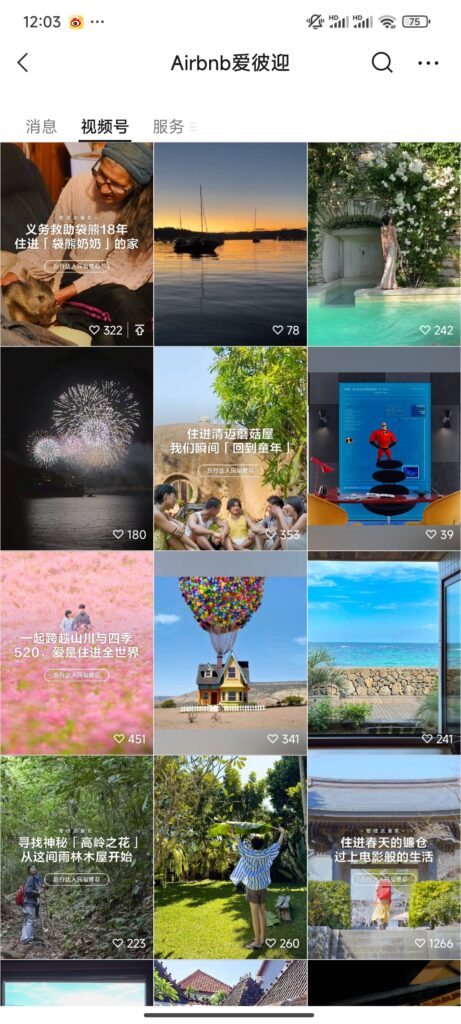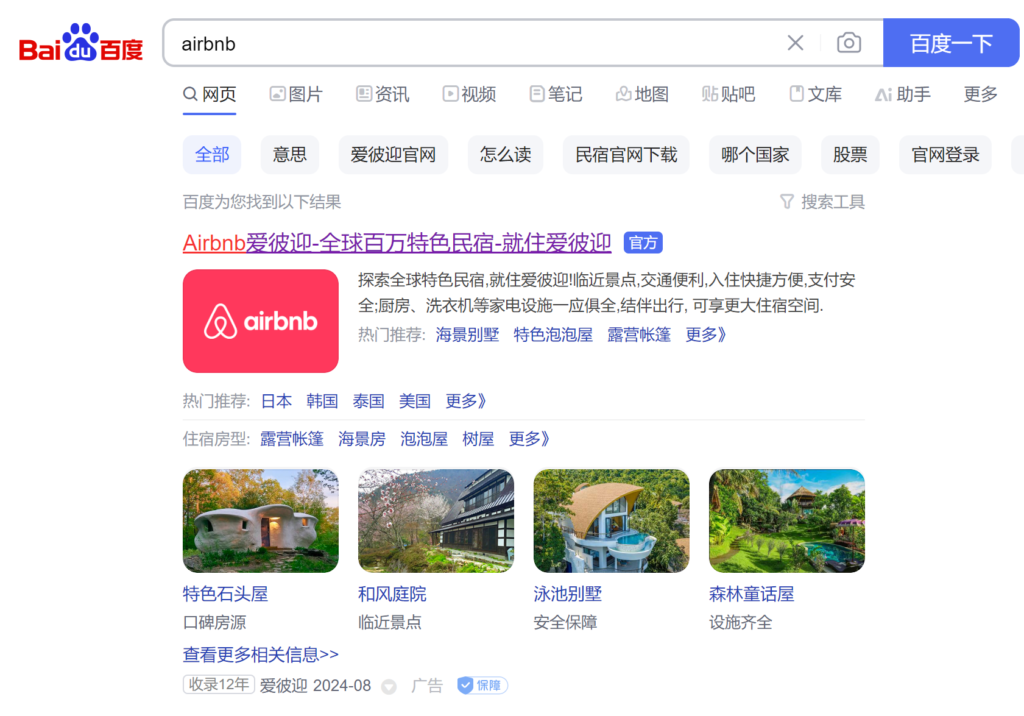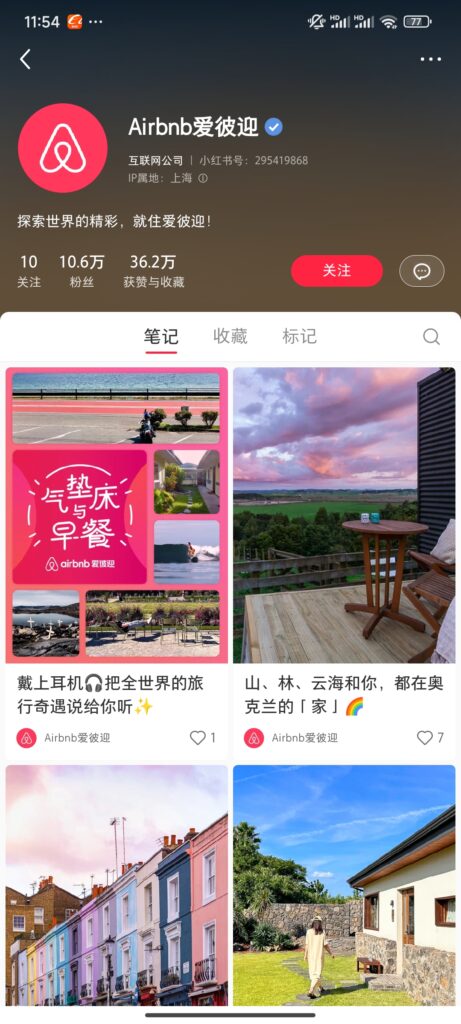The global tourism industry is experiencing a resurgence, and China is at the forefront of this recovery. In 2024, China’s outbound tourism market has exploded, solidifying its status as a critical driver for the revival of the worldwide travel sector.
As Chinese consumers eagerly resume their international travel plans, overseas tourism brands are eagerly seizing the opportunity to reach this lucrative market. Therefore, leveraging effective online marketing strategies has become paramount for these brands to capture the attention and bookings of Chinese globetrotters.

Analysis of China’s Outbound Tourism Trends in 2024
Market Recovery
According to the China Tourism Academy (CTA), China’s outbound tourist volume is projected to reach 130 million in 2024, a significant increase compared to 2023. This remarkable rebound can be attributed to the accelerated resumption of international flights and the gradual easing of visa restrictions. As air travel capacity continues to be restored, pent-up demand from Chinese consumers has led to a sharp uptick in overseas travel bookings.
Destination Distribution
Popular outbound destinations for Chinese tourists in 2024 include Thailand, Japan, and Singapore, among others. While these destinations have regained their pre-pandemic popularity, the recovery has been uneven across different regions. Countries offering visa-free or visa-on-arrival policies have witnessed a particularly robust resurgence in Chinese visitor numbers, underscoring the importance of seamless entry policies in attracting this lucrative market.
Traveler Profiles
The typical Chinese outbound traveler in 2024 is predominantly from the younger generations, with the 22-41 age group comprising the largest cohort. Moreover, female travelers continue to account for a significant portion of the outbound market. Notably, the post-90s and post-00s generations have become the driving force behind China’s outbound tourism, with a strong appetite for adventure and novel experiences.
Consumption Trends
What’s more, Chinese tourists have become more discerning in their outbound travel preferences, prioritizing immersive experiences over traditional shopping-centric itineraries. The popularity of “outbound travel plus” hybrid products, which combine tourism with other activities like culinary exploration, outdoor adventures, or cultural immersion, has surged. Additionally, Chinese travelers have demonstrated a growing interest in niche and off-the-beaten-path destinations, seeking to explore unique and thrilling experiences.
Online Marketing Strategies for overseas Tourism Brands in China
Platform Selection
1. Social Media Platforms
Firstly, leveraging the vast user base and high engagement of WeChat and its mini-programs, overseas brands can execute targeted marketing campaigns to reach Chinese consumers. Meanwhile, platforms like Douyin (TikTok) and Xiaohongshu (Little Red Book) provide an ideal canvas for showcasing destination allure and unique activities through captivating short-form videos and visually appealing content.
Travel Booking Platforms
Secondly, major online travel agencies (OTAs) like Ctrip and Fliggy serve as key booking channels for Chinese tourists. Collaborating with these platforms to promote travel products and optimize the booking experience can be highly effective. Additionally, niche travel communities such as Mafengwo and Qyer, known for their in-depth destination guides and traveler reviews, can help overseas brands influence the decision-making process of potential Chinese visitors.
Search Engines and Advertising Platforms
Last but not least, utilizing the targeted advertising capabilities of search engines like Baidu and Google can enable overseas tourism brands to precisely target and reach their desired Chinese consumer segments, ultimately driving higher conversion rates.

2. Content Delivery
Localization and Personalization
Firstly, tailoring promotional content to align with the preferences and habits of Chinese tourists is essential. Highlighting the unique allure and cultural experiences of destinations can resonate strongly with this audience. Leveraging data analytics to provide personalized recommendations can further enhance the relevance and appeal of the brand’s offerings.
Storytelling and Emotional Connection
Secondly, sharing authentic stories and showcasing real-life traveler experiences can evoke a stronger emotional response from potential Chinese visitors, fostering a sense of trust and affinity towards the brand. High-quality video and visual content that showcases a destination’s natural beauty, cultural heritage, and local lifestyles can captivate and inspire Chinese consumers.
Interactivity and Participation
Thirdly, introducing interactive online activities, such as live-streamed Q&A sessions or social media-based giveaways, can increase user engagement and brand exposure. Encouraging Chinese tourists to share their own travel experiences and insights through social media platforms can further amplify the brand’s reach and influence.
Leveraging New Technologies
Last but not least, integrating virtual reality (VR) and augmented reality (AR) technologies can provide immersive, experiential previews of destinations, allowing potential Chinese visitors to virtually immerse themselves in the travel experience. Implementing AI-powered features, such as smart recommendations and voice assistants, can enhance the overall user experience and cater to the evolving expectations of tech-savvy Chinese consumers.
Airbnb’s Online Marketing Strategies in China
As the global leader in the home-sharing and vacation rental industry, Airbnb has placed a strong emphasis on the vast Chinese outbound travel market in recent years. The company has implemented a comprehensive suite of online marketing initiatives to enhance brand awareness and drive business growth in the Chinese market.
WeChat Mini-Program
Firstly, Airbnb has launched a customized mini-program within the WeChat ecosystem to provide a localized booking experience for Chinese users. The mini-program features real-time availability checks, personalized recommendations, and integrated WeChat Pay functionality. Leveraging WeChat’s status as one of the most frequently used apps in China, Airbnb has achieved effective engagement with Chinese travelers through this mini-program.


WeChat Official Account
In addition to the mini-program, Airbnb has also established a WeChat official account to share relevant travel content, showcase unique property listings, and engage with its Chinese audience. The official account allows Airbnb to cultivate a direct communication channel and build a loyal following among Chinese consumers.


WeChat Video Account (Weishi)
To further strengthen its visual storytelling and brand presence in China, Airbnb has also created a WeChat Video Account (known as Weishi). This channel allows the company to produce and share engaging, short-form video content that showcases its unique travel experiences and properties, capturing the attention of Chinese viewers who are increasingly consuming content on mobile video platforms.

Baidu Advertising
Recognizing the importance of search engine marketing in China, Airbnb has invested in Baidu advertising to reach potential customers at the research and planning stages of their travel journey. By leveraging Baidu’s powerful targeting capabilities, Airbnb can serve tailored ads to users based on their search queries and browsing behavior.

Xiaohongshu (Little Red Book) Advertising and Operations
Airbnb has also embraced the popular social commerce platform Xiaohongshu (Red) as part of its China marketing strategy. The company runs targeted advertising campaigns on Xiaohongshu to showcase its unique experiences and properties. Additionally, Airbnb actively engages with the Xiaohongshu community by sharing inspiring travel content and collaborating with key opinion leaders (KOLs).


Data-Driven Personalization
What’s more, across all these digital channels, Airbnb also leverages data analytics to provide personalized property recommendations and tailored marketing content to Chinese users based on their search patterns, browsing behavior, and booking history. This data-driven personalization approach has helped Airbnb improve conversion rates in the Chinese market.
By integrating WeChat (mini-program, official account, and video account), Baidu, Xiaohongshu, and data-driven personalization into its comprehensive online marketing strategy, Airbnb has effectively enhanced its brand awareness and appeal among Chinese consumers, positioning the company for continued success in the highly competitive Chinese short-term rental market.
Conclusion and Recommendations.
The explosive growth of China’s outbound tourism market in 2024 presents a significant opportunity for overseas tourism brands to expand their reach and capture a share of this lucrative market. As Chinese travelers resume their international journeys, brands that effectively leverage online marketing strategies will be well-positioned to attract and convert this highly valuable customer segment.
Therefore, to succeed in the Chinese market, overseas tourism brands should carefully select the most relevant online platforms, tailoring their content and messaging to resonate with the unique preferences and behaviors of Chinese consumers. A balanced approach that combines social media engagement, strategic partnerships with leading travel booking platforms, targeted advertising, and the integration of innovative technologies can help brands stand out in the highly competitive landscape.
As the industry continues to evolve, overseas tourism brands must remain agile and adaptable, continually optimizing their online marketing efforts to stay ahead of the curve. By embracing data-driven insights, fostering emotional connections with Chinese travelers, and embracing the latest digital trends, overseas brands can capitalize on the remarkable resurgence of China’s outbound travel market and solidify their position as preferred destinations for discerning Chinese globetrotters.
Please feel free to contact Deep Digital China if you are seeking support on your Chinese marketing plan.

